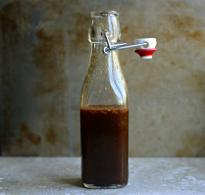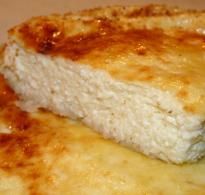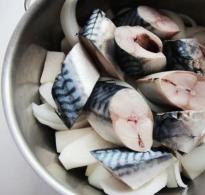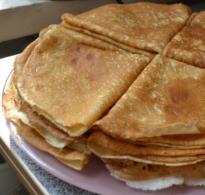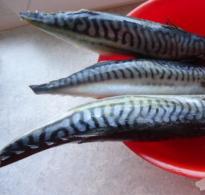Swiss food.
Swiss Cuisine - fragrant mixture German, French and Italian cuisine. Most restaurants and hotel canteens offer a wide variety of dishes on the menu. different countries. You need to make an effort to find a restaurant with dishes from local cuisine.
If you manage to visit Switzerland, be sure to take the opportunity to try the colorful local cuisine, often borrowed, with the introduction of your local northern flavor.
Swiss cheese
Cheese making is part of the Swiss heritage. On the territory of modern Switzerland, cattle breeding and dairy farming have always been accepted, concentrated in the highlands of the country. Today, more than 100 varieties of this product are produced here. However, there is no mass production here, everything is prepared in hundreds of small, tightly controlled dairy plants, each of which is under the supervision of a master cheesemaker, with a federal degree.
Cheese with holes, known as Swiss or Emmental, has become widespread, despite the fact that it was originally produced in the Emme Valley. Then no one thought about how to protect the name for the cheeses of this area. Other famous cheeses called Gruyère, Appenzell, Raclette, Royal and Schabziger. The names of some varieties were also copied, for example Sbrinz and Spalen are closely related to the ancient Roman name Helvetian ( caseus helveticus).
Fondue

Cheese fondue, which consists of Emmental and Gruère, used alone, together or with special local cheeses, which are melted in white wine flavored with garlic and lemon juice. Freshly ground pepper is added to the dish, nutmeg, red pepper and kirsch. Traditional local spices are often added as well. Guests surround a bubbling fondue cup and use long forks to dip cubes of bread into the hot mixture. Instead of bread, apples, pears, grapes, sausages, cubes of boiled ham, shrimp, pitted olives, and small pieces of boiled potatoes can be used.
Raclette
Almost as well known as fondue. Popular for many centuries, its origin is lost in antiquity, but the word "raclette" comes from the French word racler, which means "scrape". The name raclette originally belonged to a dish made from the special Valais mountain cheese, but today this name is given not only to the dish itself, but also to cheeses suitable for melting on open fire or in the oven.

A piece of cheese (traditionally half to a quarter of a wheel of raclette) is held over an open fire. As soon as it begins to soften, it is scraped onto a plate. special knife. The unique aroma and taste are most revealed when hot. The classic accompaniment is fresh, crispy, homemade brown bread, but raclette can also be eaten with jacketed boiled potatoes, pickled onions, cucumbers, or small corncobs. Usually raclette is eaten with a fork, sometimes a knife may be needed for this.
Other Swiss cuisine
The country's ubiquitous vegetable dish, called röchti or rosti (brown potatoes). The potatoes are baked in the oven along with the cheese, which melts and turns golden brown.
Spaetzle (a local variety of dumplings) is also offered on the menu of Swiss cafes.
Lake fish in Switzerland is attractive, but expensive. delicious fish alpine lakes, of course, trout and small perches.
Hard sausages are very popular in Switzerland. They can be bought in all open markets. The best-known type is bündnerfleisch, a specially prepared dried beef.
Berner Platte - classic version Swiss cuisine. If you order this typical farm food, you will get a huge plate with a pile of sauerkraut or green beans topped with a piece of meat, sausages, ham, bacon, or pork chops.
In addition to cheese fondue, you can enjoy bourguignonne fondue, popular all over the world. It consists of pieces of meat on wooden sticks, cooked in oil, seasoned with sauces of your choice. In addition, many establishments offer chinoise fondue, made from thin slices of beef and oriental sauces.
Typical recipes from the Canton of Ticino include mushroom risotto and a mixed grill known as fritto misto. Polenta is popular as a side dish. cornmeal. Ticino is also prepared from river fish such as trout or pike. Pizza and pasta have also spread to all the provinces of Switzerland.
Salads are often combined fresh salad And boiled vegetables such as beets. If you want to try a real Swiss salad, ask for a zwiebelsalat dish made with lettuce and onions. In the spring, the Swiss love fresh asparagus so much that the police are forced to increase night patrols to reduce the theft of asparagus from the fields.
The glory of Swiss cuisine is small cakes and confectionery, which are served throughout the country in teahouses and cafes. The most common delicacy is the muffin-shaped cupcake and traditionally a big cake filled with whipped cream.
chocolate superpower
cocoa beans main ingredient chocolate. Columbus brought cocoa beans to Europe in 1502 from Nicaragua. Royal chefs mixed bean powder with sugar and hot water, which was a great success with the royal family. In the nineteenth century, attitudes towards cocoa in North America and Europe are very different.
In 1825, Jean Anthelme Brillat-Savarin, a well-known culinary specialist from the French-speaking world, declared that chocolate is one of the most effective foods for increasing physical and intellectual strength. In contrast, Harriet Beecher Stowe declared chocolate unfit for American cooking. Despite Ms. Stowe's attacks, the chocolate market continues to grow. This fact was immediately noticed by the wary Swiss from their politically neutral bastion in the Alps.
Since the early 1800s, the Swiss have invested heavily in the cocoa market. Industrial pioneers opened the country's first chocolate factory in Corsier, near Vevey. The transnational concern Suchard was established in 1824 near Neuchâtel. In 1875 Daniel Peter invented milk chocolate by adding condensed milk to cocoa powder and sugar. In 1879, the first chocolate bar was created. In 1899, the Sprungli and Lindt empires merged in Zurich to form the chocolate dynasty. Shortly thereafter, the Toblerone and Nestle organizations were formed.

Today Switzerland is the world's largest chocolate producer. Secrecy and accuracy have always been among the Swiss virtues, and both of these qualities are indispensable during complex process mixing that transforms raw ingredients into the final product. Consumers constantly expect new works of art from their chocolate wrappers so an army of commercial artists toil all year round, meeting the needs of the market.
The Swiss Consume more chocolate per capita than any other country in the world. No self-respecting climber will set off into the mountains without chocolate bars. Housewives usually do not buy less than a kilo of chocolate at a time. Therefore, this product can also be attributed to traditional Swiss cuisine.
Beverages
White wine - the best choice for use with fondue. There are few restrictions on the sale of alcohol here, but prices for bourbon, gin and whiskey tend to be much higher than in the United States. The local wines are excellent. Unlike French ones, they taste better when they have a short exposure. Many drinks are produced exclusively for local consumption. Most of the wines produced in Switzerland are white, but there are good rosés and aromatic reds.
The most exported wines are produced in Valais, Ticino and Sealand. There are more than 300 small wine regions. In the French-speaking part of Switzerland the best wines Fendant and Johannisberg are considered. In the German-speaking part, you can try several dry and light red wines - Stammheimer, Klevner and Hallauer. In Italian - red merlot with a pleasant bouquet.
Beer
Swiss beer is the drink of choice in the German-speaking part of the country. The most common are pale Helles and dark Dunkles.
Liqueurs
The liqueurs here are delicious and very strong. The most popular - Kirsch (national alcoholic drink, made from juice with a cherry pit), and Plum (plum liqueur). Williamina pear brandy is made from fragrant pears Williams. In Ticino, most of the locals love the fire brandy Grappa, distilled from the waste of the grape pressing process.
In principle, this is the main thing you can learn about Swiss cuisine. Although, of course, it’s better not to read about it, but to try it yourself, because eating through the monitor, unfortunately, will not work.

If you are going to go to Switzerland, be sure to try the best dishes Swiss cuisine.
Switzerland is primarily famous for its cheese and chocolate. This is probably why both of these products are often used in Swiss cuisine. Dishes are quite high-calorie, but is it possible to count calories on vacation?
Swiss dish number 1:
Fondue
Fondue (Swiss dish)
Fondue is the most popular national dish of Switzerland. The name Fondue was borrowed from the French and translates as "melted". Fondue is a hot melted cheese, in a special bowl, the bottom of which is constantly heated from below by fire. The dish is placed in the center of the table and the guests dip small cubes of bread into it. The secret of the Swiss fondue dish lies in the types of cheeses used for preparation.
Swiss dish number 2:
Raclette

Raclette (Swiss dish)
Another famous dish Swiss cuisine from cheese - Raclette. They say that this dish was once invented by mountain shepherds. They put a piece of cheese near the fire, and then scraped off the thawed side with bread. Now raclette is cooked in a completely different way in a special raclette maker. A thick piece of cheese is placed on the grill, melted and boiled potatoes are poured over the potatoes. Raclette is usually served with pickled cucumbers and onions.
Swiss dish number 3:
Veal in Zurich (Zurich Geschnetzeltes)

Pronouncing the name of this dish is quite difficult, but this treat is definitely suitable for lovers. meat dishes. Traditionally, the main ingredient, you guessed it, is veal. A dish is prepared with mushrooms seasoned with cream and white wine. Zurich-style veal is usually served with pasta, or Resti.
Swiss dish number 4:
Rosti (Resti)
Resti is also one of the national dishes of Switzerland. Resti is prepared as follows: from grated potatoes make cakes and fry them in a pan in butter or vegetable oil. Resti is usually served with cheese or bacon.
Swiss dish number 5:
Swiss Chocolate

Swiss chocolate is considered the best in the world. He happens to be the most different forms and sizes. factories are strictly controlled manufacturing process and therefore Swiss chocolate became famous not only for its excellent taste, but also for its high quality. The Swiss Association of Chocolate Manufacturers Chocosuisse claims that the Swiss eat more chocolate than any other nation in the world.
And if you want to not only try real chocolate, but also to learn how it is prepared, go on an excursion to one of the chocolate factories in Switzerland.
Chocolate factories and museums in Switzerland
Cailler Nestle Broc Factory is the oldest and most famous chocolate Factory located in the provincial town of Broc in Switzerland. Here, visitors are shown how chocolate is made, introduced to the history of the plant and tasting the best chocolate brands.
Alimentarium Food Museum dedicated to the history of food in general. The museum is in amazing beautiful place in the city of Vevey on the shores of Lake Geneva. This museum has a separate room dedicated to the history of chocolate.

Vevey - Swiss Riviera
Alprose Chocolate Museum tells the most detailed history chocolate production in Switzerland. The museum is located in the small town of Caslano on the shores of Lake Lugano. On weekdays, you can watch the full process of making chocolate.

Chocolate brand Chocolate Frey AG
Famous chocolate brand in Switzerland. The factory is located in the north of the country in the city of Buchs. Chocolate Frey AG constantly organizes three-hour tours with full immersion in chocolate production.
The national cuisine of Switzerland has incorporated the best culinary traditions Italian, French and German cuisine. After all, these countries are the closest neighbors. The main components of the local cuisine are cheese, milk, meat, eggs, butter, flour and spices. It should be noted that all these products highest quality, natural, fresh and without harmful additives. There is even a special organization in the country that issues certificates for the best Swiss products, which are awarded the prestigious quality mark - IGP or AOC. Such truly folk products include: jerky from Graubünden, cheese "raclette", Welsh Rye bread, Bratwurst fried pork sausages, Vaud sausages and many others.

Home calling card, cuisines of switzerland, considered cheese and sour-milk products. There are over 150 types of cheese in this small country. The most famous - " Emmental, Gruyère, Appenzellern, Piora, Vascherin, Schabziger« and others. And the most famous Swiss dish is fondue. Several types of cheese are melted in boiling white wine and various spices are added. This dish is served hot with small pieces. white bread, which are dipped in the mixture and washed down with white wine. This is a classic version of fondue. Sometimes they cook right on the table, in one pot for the whole company.

In recent years, Swiss fondue has taken on a broader meaning. There are many types of this dish, which are prepared according to completely different technologies and recipes. For example:
- “chicken fondue” - chicken fillet stewed in a creamy sauce;
- « rustic fondue"- fried meat with potatoes, filled with melted cheese;
- « burgundy fondue» — boiled meat with cheese and spices;
- « chocolate fondue "- melted chocolate with honey and almonds, in which fruits, waffles, cookies, bread are dipped.
And even such unusual options- "blueberry fondue" and " ice cream fondue".

There are also others cheese dishes deservedly popular. Be sure to try:
- "raclette" - boiled potatoes (sometimes in uniform) with melted cheese and crispy pickled cucumbers;
- « Swiss cheese soup » with fried crackers;
- Swiss meat, generously sprinkled with grated cheese; scrambled eggs in a water bath with cheese;
- "reshti" - fried flatbread from boiled potatoes(reminiscent of our pancakes), sprinkled with cheese.

As a first course, Swiss cuisine will offer you:
- minestrone vegetable soup
- « Graubünden barley soup,
- Ticinese soup "Busecco" with giblets,
- "Flour stew from Basel".
For the second, you should try:
- Geschnetzeltes - narrow stripes roast veal with mushrooms, herbs and sauce;
- "Bernes Platter" - fried pork with beans, or sauerkraut;
- "Bundenfleisch" - beef jerky with salted onions;
- "Knackerley" - spicy sausages with sauce and spices;
- "leberwurst" - smoked sausage from the liver and fat;
- "creepfli" - puff pastry with various fillings.

Did not ignore Swiss cuisine, sweet tooth. First of all, it is the famous Swiss chocolate. Every Swiss eats over 12 kilos of chocolate a year. Also, try:
- "leckerley" - honey gingerbread; gingerbread from Basel;
- "kyukhli" - sweet pies;
- "brunsley" - chocolate chip cookie with almonds;
- "zuger-kirshtorte" - layered cake with sweet filling;
- "muesli" with nuts, apples and raisins (by the way, this dish was invented in Switzerland).

From soft drinks the Swiss prefer coffee, milk, fruit juices, hot chocolate. Beer "Samichlaus" is popular, with a strength of up to 14%. Swiss wines are great too. Ferdan, Lavu, Coron, Dol, Johanniober, Lamey and others. Of more strong drinks- " kirsch" (cherry vodka), "pflumli" (plum brandy), "williams" (pear brandy).
Welcome to hospitable Switzerland and bon appetit to all!


